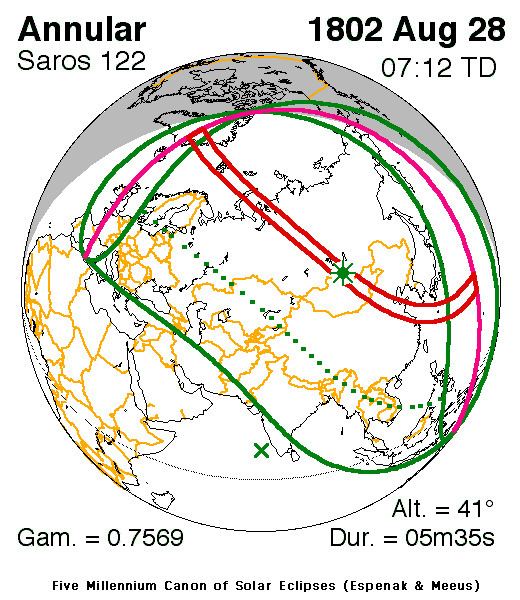Nature Annular Magnitude 0.9367 Max. width of band 354 km (220 mi) Date 28 August 1802 | Gamma 0.7569 Duration 335 sec (5 m 35 s) Greatest eclipse 7:12:00 | |
 | ||
Other Instances Solar eclipse of April 8 - 2, Solar eclipse of July 2 - 20, Solar eclipse of August 2, Solar eclipse of March 9, Solar eclipse of March 20 | ||
An annular solar eclipse occurred on August 28, 1802. A solar eclipse occurs when the Moon passes between Earth and the Sun, thereby totally or partly obscuring the image of the Sun for a viewer on Earth. An annular solar eclipse occurs when the Moon's apparent diameter is smaller than the Sun's, blocking most of the Sun's light and causing the Sun to look like an annulus (ring). An annular eclipse appears as a partial eclipse over a region of the Earth thousands of kilometres wide. The eclipse was visible in Asia and Europe, while the annularity was seen in Russia, Mongolia, and China.
References
Solar eclipse of August 28, 1802 Wikipedia(Text) CC BY-SA
